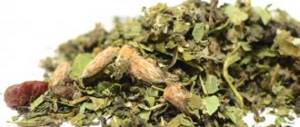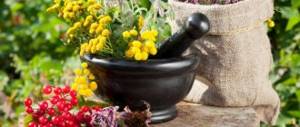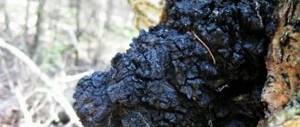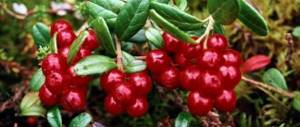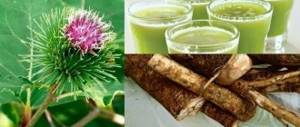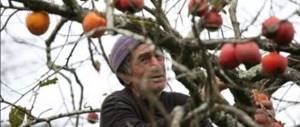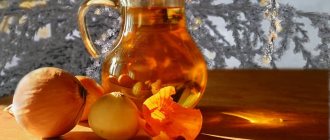Nature never tires of taking care of our health, and today we’ll talk about what properties the viburnum berry has, why it is medicinal and for whom it is contraindicated. You will also learn many recipes for healing using this plant.
During the period of colds, viburnum becomes especially popular, and this is not surprising, because it can treat coughs, reduce fever, and protect against viruses and bacteria. However, the beneficial effect of red viburnum is much broader - knowledgeable people use it for cardiovascular diseases, anemia, problems with the liver and kidneys, vitamin deficiency, bleeding ulcers and allergies.
Viburnum is used to prepare teas, fruit drinks, infusions, jelly, decoctions, and compotes. Fresh juice and the berries themselves are consumed as food, mixed with honey; face masks are also made from viburnum fruits.
Every component of viburnum is useful: fruits, bark, seeds, flowers. The bark begins to be collected from April to June, and it is better to remove it from young branches and trunks. At this time, the bark can be easily separated from the wood due to active sap flow. In autumn, the bark of viburnum can be removed from thick branches that have been cut down. Viburnum blooms in May, and the berries appear from August to September. Moreover, if before the first frost, viburnum berries have a sour and bitter taste, then after frost the fruits acquire a sweeter taste.
Chemical composition and beneficial properties of viburnum
In folk medicine, all parts of the plant are used: berries, shoots, leaves. The fruits are especially useful; they are bright red in color and have a bitter taste. The following substances can be found in their composition:
- Tannins.
- Phytoncides.
- Vitamins: A, C, P, K.
- Minerals: Ca, Fe, Mg, Cu, Ni, Mn, I, Pb.
- Fats.
- Organic acids: isovaleric, formic.
- Steroidal saponins.
- Triterpene saponins.
- Flavonoids.
- Pectins.
The caloric content of berries is small and amounts to 28 kcal per 100 grams .
The organic acids that make up the berries prevent the formation of free radicals and prevent the proliferation of pathogenic bacteria.
Pectins cleanse the blood and blood vessels of allergens, toxins, and waste. Saponins maintain the water-salt balance of the human body. Tannins accelerate the healing of wounds, abrasions, and burns. They have a bactericidal effect. Flavonoids increase the elasticity of blood vessels.
Due to its rich chemical composition, the berry has the following healing properties:
- Calms the nervous system.
- Strengthens the immune system.
- Suppresses the development of pathogenic microorganisms, viruses, strains.
- Has a diuretic effect.
- Stops bleeding.
- Reduces cholesterol levels.
- Crushes and removes stones.
- Has an expectorant effect.
- Accelerates the production of bile.
- Normalizes blood sugar levels.
- Improves digestion.
- Removes excess fluid from the body.
- Reduces blood pressure.
- Whitens and tones the skin.
- Lowers body temperature.
- Relieves inflammation.
The use of red viburnum for medicinal purposes
Adherents of alternative medicine use viburnum in the treatment of various diseases.
Viburnum and pressure
Ignoring sudden surges in pressure can provoke serious diseases, including: stroke, heart and coronary failure, and kidney problems.
People with high blood pressure will benefit from viburnum, which improves well-being and prevents new attacks.
Recipe for high blood pressure.
Ingredients:
- viburnum berries;
- sugar.
Fill the berries with sugar in a 1:1 ratio. Leave for 12 hours. During this time, juice will be released. Take a teaspoon several times a day until you feel better.
Plant for the female body
The substances in viburnum are similar to female hormones. Berries are good for women during menopause. With the help of the plant you can stop uterine bleeding, reduce pain during menstruation, and cure mastopathy.
Recipe for tea for the treatment of female diseases.
Ingredients:
- dried viburnum berries – 2 tablespoons;
- water – 200 ml;
- honey – 1 teaspoon.
Grind the dried berries in an enamel container. Pour boiling water into the container with the berries. Boil over low heat for about 10 minutes. Strain. Add honey to a cup of viburnum tea. Take this tea every day.
Viburnum for children
The substance is good for the immune system; it makes blood vessels elastic. Tea with viburnum calms the nervous system and normalizes sleep. Indications: childhood hyperactivity.
Berries contain iron; regular consumption of decoctions and drinks prevents the formation of anemia.
Tea with the addition of a small amount of viburnum can be given to children from one year old. After using a new product for the first time, observe your baby’s reaction. If the child accepts drinks with viburnum well and there are no allergic reactions, gradually increase the number of doses.
Many people know about the beneficial properties of viburnum; it is not surprising that the plant is used in the preparation of homemade cosmetics. The plant contains many vitamins and acids that have a positive effect on beauty and health.
Viburnum has whitening properties, so it is used in the fight against freckles. Soak gauze in viburnum juice. Apply it to areas with freckles. Leave for 15 minutes, apply nourishing cream. Apply lotions every day until the skin lightens.
Over time, a person’s skin loses its elasticity; a toning mask will help to tidy it up.
You will need:
- nourishing cream suitable for skin type;
- fresh viburnum leaves.
Grind the leaves and mix them with the cream. For the components to interact, leave them for 2 hours. Cleanse your face, apply the mixture, leave for 15 minutes. Rinse off the mixture with warm water. Do the mask once a week.
A face mask with a moisturizing effect is prepared as follows:
- viburnum fruits – 2 tablespoons;
- glycerin – 1 teaspoon;
- water – 4 tablespoons;
- honey – 1 teaspoon;
- olive oil – 1 teaspoon;
- powdered milk - a pinch.
Mash the berries scalded with boiling water with a fork. Dilute glycerin in 4 tablespoons of water. Pour into the paste and add the rest of the ingredients. Stir. Exposure time 15 minutes. The mask tones and has a slight rejuvenating effect. Suitable for normal to dry skin types.
How to use the plant for stones?
When kidney stones appear, traditional medicine offers recipes that relieve a person from the disease. The berries and bark of the plant have an anti-inflammatory effect and soothe the organs during treatment. Experts recommend taking decoctions and infusions of viburnum. Patients drink tea, juice and seeds of the medicinal plant, which will improve health, strength, and performance. Fruits and flowers will relieve pain and discomfort.
Viburnum juice for treating kidney stones
Alternative medicine recommends using viburnum juice for treatment. The product is prepared from clean, fresh berries. The resulting juice is mixed with sugar in equal proportions, poured into jars and tightly closed with a lid. Store the medicine in the refrigerator. For long-term storage of the product, it should be ground with sugar to a jelly-like state.
Fresh viburnum with sugar is good for stimulating the passage of kidney stones.
To remove kidney stones, traditional medicine suggests drinking boiled viburnum juice. To prepare it, take 1 kg of fresh berries and add 1 liter of purified water. The mixture is simmered over low heat until the fruits become soft. The juice is squeezed out and settled. A glass of sugar is added to the product and heated until completely dissolved. The drink is well filtered and brought to a boil.
- How to remove a kidney stone? Folk remedies and medications for removing kidney stones
Traditional healers recommend swallowing berry seeds, as they help rid the kidneys of stones. Eating 10 seeds daily promotes recovery and improved well-being. To eliminate unpleasant effects on the stomach and intestinal problems, experts advise distributing the portion throughout the day. Patients can take no more than 5 seeds at one time.
Infusion of flowers
The spontaneous passage of stones causes discomfort, discomfort and severe suffering in a person. Medications do not always work effectively and can cause side effects. Traditional medicine suggests treating a disease caused by kidney stones using an infusion of viburnum flowers:
- inflorescences - 20 g;
- boiled water - 1.5 tbsp.
Drinking viburnum flower infusion speeds up getting rid of kidney stones.
The plant is poured with water and boiled for 5 minutes, then left for 2 or 3 hours. Patients take a filtered solution of 100 ml before meals. A decoction will help a person with a serious illness and can prevent surgery. However, treatment should be carried out under the supervision of a qualified specialist to avoid complications.
Delaying treatment and inept independent actions can lead to chronic renal failure or kidney removal.
Viburnum opulus for women
Inflammatory diseases of the female genital area are successfully treated with different parts of the plant.
There is a simple recipe for normalizing the cycle using crushed viburnum bark.
- You need to take 4 teaspoons of crushed bark, add a glass of water and keep on fire for half an hour. Afterwards, strain while still hot and bring with boiled water to the original volume. Take 1 tbsp. 3 times a day.
The beneficial properties of viburnum berries are used in recipes for the treatment of erosion and mastitis.
- To treat cervical erosion, you need to mix viburnum berry pulp with onion pulp. Make tampons with this mixture ten times, every other day, for example, on even numbers. On odd days, use sea buckthorn oil for tampons.
- Purulent mastitis. Take three to four tablespoons of viburnum berries and pour half a liter of boiling water. The broth should be boiled for twenty minutes, after which two hundred and fifty milliliters should be taken in small sips twice a day.
♦ Masks made from viburnum berries perfectly remove brown spots on the face that appear during pregnancy.
Let's move on from the beneficial properties of viburnum for women to contraindications. The plant should not be used during pregnancy. Viburnum phytoestrogens can provoke fetal pathology and lead to premature birth.
Indications and contraindications for use
Viburnum is used in folk medicine to treat the following pathologies:
- Bronchitis, ARVI, flu.
- Gastritis, stomach ulcer.
- Cardiovascular diseases.
- Insomnia, nervous disorders.
- Skin diseases.
- Diseases of the urinary system.
- Gynecological diseases.
- Hypertension.
- Bleeding of various etiologies.
- Stomatitis, toothache.
Concentrated juice from the berry is capable of destroying the causative agents of dysentery, typhoid fever and anthrax.
Diluted juice has a diuretic and antiseptic effect, so it is used to treat diseases of the urinary system.
Drinks made from fruits strengthen the immune system, increase the body's defenses and performance.
A decoction of viburnum bark reduces body temperature and serves as a good remedy for preventing miscarriage.
- How to dissolve kidney stones using folk remedies
Fresh berries lower blood pressure and have a hemostatic effect.
Berry seeds have a powerful antioxidant effect and prevent cell aging.
There are a number of contraindications for using the plant. Do not take if you have the following diseases:
- Gastritis with high acidity.
- Hypotension.
- Arthritis.
- Gout.
- Thrombosis.
- Allergies and individual intolerance to components.
Use with caution for long-term pregnant women, since the substances contained in the shrub are analogues of hormones and can provoke premature birth.
It is forbidden to take viburnum and drugs based on it for a long time; it is necessary to take a break from treatment.
Viburnum for colds, flu and coughs
For colds, viburnum often acts as an additional element in treatment. For example, when coughing, after the patient has been rubbed with pork fat in combination with pine oil, it is good to drink tea with honey, viburnum and lemon. For colds, coughs and flu, viburnum mobilizes the body's defenses and helps to quickly cope with the infection.
♦ For a cold, take one tablespoon of the plant’s flowers and brew it in a glass of boiling water. Let it sit for about ten minutes and add a little juice from the fruit and honey. Drink three to four glasses a day.
♦ For a sore throat, take the berries of the plant and pour a liter of boiling water over them. You need to simmer over low heat for at least fifteen minutes. Strain the entire broth and squeeze out the berries. After this, the entire volume must be brought back to a liter and two tablespoons of honey added to it. You need to drink throughout the day, preferably every hour in small portions. After a day there should be relief.
Indications for use
Therefore, eating berries and other parts of the bush in the form of infusions, decoctions and fresh will be useful for many ailments. Among them
- cardiovascular diseases, including hypertension;
- sore throats, tonsillitis, bronchitis, colds accompanied by a severe cough;
- for tuberculosis;
- long-term use reduces blood cholesterol levels;
- as part of preparations for type 2 diabetes mellitus;
- in gynecology for painful periods;
- hemostatic for uterine bleeding;
- as a sedative for irritability, neuroses, hysteria;
- for kidney and liver diseases;
- malignant tumors;
- skin diseases;
- in cosmetology;
- externally for conjunctivitis, for washing wounds, gargling.
Description of the plant
Viburnum is a common plant that grows almost everywhere: in Russia, Europe, America, North Africa. The medicinal properties of viburnum are valued all over the world; it also fits well into any landscape, complementing it, which is why it began to be grown in household plots.
Viburnum belongs to the Adoxaceae family. It is a shrub with red or black berries. The height of the plant can reach four meters. The bark is gray-brown, the leaves are long, on average eight centimeters. They are dark green above and grayish-green and wrinkled below. The plant blooms with white or white-pink flowers collected in inflorescences. The flowers are small, fruiting. The fruits are spherical or oval, can be red or black with a large seed, juicy, with a bitter astringent taste.
The plant blooms in late May - early June. The fruits begin to ripen in early September.
Viburnum during pregnancy and breastfeeding
loading.
Despite the fact that viburnum is an excellent source of beneficial vitamins and minerals needed by the expectant mother, its use is contraindicated during pregnancy. The fruits of the plant increase the tone of the uterus and are a strong allergen. In case of an overdose, a miscarriage is possible, and in the later stages, taking viburnum-based products threatens premature birth.
During pregnancy, it is better to avoid taking viburnum - it increases the tone of the uterus
- How to cure kidney stones using traditional medicine methods
Viburnum is completely contraindicated in the first three to five months of lactation - its intake can negatively affect the digestive system of the newborn. Gradually, a nursing mother can introduce viburnum into her diet - in the form of additives in compotes, teas, casseroles of 5-10 berries. At this time, you need to carefully monitor the child’s reaction - if there are no rashes, red cheeks, or digestive disorders, you can gradually increase its intake.
Benefit
As a hemostatic agent
- Diseases in which blood clotting is impaired are very dangerous for humans, so urgent measures should be taken. Plants containing a lot of vitamin K will help with this. This list also includes viburnum. 5 grams of its berries contain the daily dose needed by a person. When bleeding, it is recommended to drink tea from the berries, as well as decoctions from the bark. Medicines, the main component of which is viburnum, are widely used in gynecological and postpartum practice if there is a need to stop internal bleeding.
- A decoction of viburnum bark will help stop nosebleeds. Just dip a cotton swab in it and insert it into your nose. Hemorrhoids will recede if you make baths from the decoction.
Contraindications: what to remember?
Despite the rich vitamin composition and a lot of useful substances, you need to remember about contraindications. They must be studied before using red viburnum, so as not to worsen the health situation.
Do not use decoctions, infusions, or juices of viburnum for:
- increased blood clotting, tendency to thrombosis (since the plant acts as a coagulant);
- gout due to the high content of purines, which can cause the formation of salts in the joints (this prohibition is more relevant for men);
- urolithiasis;
- peptic ulcer of the stomach and intestines;
- increased stomach acidity (viburnum promotes the production of hydrochloric acid and bile, which can cause exacerbation of chronic diseases);
- hypotension (consumption of viburnum can cause fainting and dizziness);
- diabetes mellitus (due to the presence of invert sugar in berries);
- enuresis (due to strong diuretic properties);
- chronic pathologies during periods of exacerbation.
It is also recommended to avoid viburnum during pregnancy, since the berries contain phytohormones that are similar to female sex hormones. Their excess can cause miscarriage and the development of pathologies in the fetus.
For whom is viburnum berry contraindicated?
- If you have increased blood clotting, you should not use this plant. Accordingly, if you are prone to blood clots, it is also not recommended to take viburnum. It should not be used for gout either, as it contains organic acids in large quantities. The purine contained in viburnum does not allow this plant to be included in the diet of people with urolithiasis and arthritis. If there is an increased level of hydrochloric acid in the stomach, it should be used with caution. Viburnum can cause harm to hypotensive people. During pregnancy, the use of viburnum and preparations made from it is contraindicated, since an allergic reaction to this plant is possible, in particular to the significant content of vitamin C. An overdose of drinks with viburnum can cause harm in the form of a rash on the skin.
Symptoms
Cystitis is characterized by a combination of urinary disorders and the body’s general reaction to the disease. These manifestations include:
- Frequent urination, which is accompanied by pain, cutting, and a burning sensation along the urethra.
- The appearance of a large number of leukocytes and bacteria in the urine. This change in the urinary system is a consequence of the body's immune response.
- Hematuria. Often, inflammation leads to disruption of the integrity of blood vessels, resulting in cystitis accompanied by the presence of blood in the urine.
- Increased body temperature.
- Decreased performance.
- Body aches.
In the first hours of the disease, all symptoms are quite pronounced. The exception is the subacute form, which can be asymptomatic and most often leads to the development of a chronic urinary tract infection.
Let us separately dwell on the use of the unusually shaped heart-shaped seeds of the plant as a remedy. Usually it is customary to throw them away, but, as already mentioned, the healing qualities of the plant extend to all its parts, including the seeds. The viburnum berry, valuable for health, whose beneficial properties are difficult to over-praise, has equally valuable seeds.
Viburnum seeds contain a high percentage of biologically active substances, so the oil obtained from them is widely used as a component of food additives. In addition, it is included in some medicines and is used in cosmetology.
Natural carotenoids, which viburnum seed oil is rich in, help prevent cancer, and their action as natural antioxidants protects the body from harmful external factors and slows down the aging process. Such qualities of the product have made it a popular ingredient in anti-aging creams and masks.
Regular consumption of viburnum seeds will help get rid of stones and sand in the urinary and gall bladder, kidneys, and bile ducts. In addition, the seeds will cleanse the body of toxins and have a stimulating effect on the intestinal muscles. Normalizing the functioning of the urinary system and gastrointestinal tract will have the best impact on your overall well-being and appearance: headaches will go away or become less frequent, your performance will increase, and your facial skin will look refreshed and rejuvenated. For medicinal purposes, it is enough to eat 10-15 seeds during the day, one at a time.
Cooking viburnum in different ways
There are many options for preparing viburnum. Let's get acquainted with the most popular of them.
Grind the berries through a sieve to obtain viburnum juice. Store the finished product in the refrigerator for no longer than 3 months.
Drinking juice once a day prevents the development of gastrointestinal diseases, headaches, and hypertension.
Tea with viburnum
Wash the berries and make a paste out of them in a saucepan. Pour boiling water over the berries and put on fire for 10 minutes. Don't boil.
Strain the broth through a sieve, then boil. Drink this tea with honey and lemon.
Viburnum has a diaphoretic effect, so tea made from berries reduces high fever, improves blood circulation, eliminates headaches and inflammation.
Decoctions with viburnum
Decoctions with the bark of the plant help with gynecological diseases, eliminate nosebleeds and hemorrhoids, and improve a woman’s condition during menstruation. To prepare the decoction you will need:
- crushed plant bark - 4 teaspoons;
- water – 200 ml.
Pour boiling water over the bark and boil for about half an hour. Strain. Add boiled water to the original volume. Take a tablespoon 3 times a day before meals.
The following decoction will help cure coughs or colds in children. You will need: crushed viburnum flowers (5 tablespoons) and water (1 liter). Pour boiling water over the flowers and leave to steep for an hour. Give children 100 ml of warm broth before meals. For babies under one year old, 30 ml of the drink is enough.
Viburnum tincture
You will need:
- viburnum berries – 500 g;
- vodka – 500 ml.
Select the berries, wash them and dry them. Place in a glass container until they fill about half the volume. Pour in vodka to cover the berries. Close the container with a lid and place in a warm place. After a day, add the remaining vodka. Leave it to brew for a month. The quality of the tincture depends on the duration of its preparation. The drink can be consumed after preliminary filtration.
The tincture calms the nerves, relieves depression, increases stress resistance, and restores sleep.
Using plant seeds
The seeds contain active substances that can be used in the treatment of various diseases. Among them:
- ulcer;
- chronic constipation;
- haemorrhoids;
- anemia;
- cold;
- bleeding (internal and external);
- skin rashes and others.
Infusion of viburnum seeds:
- viburnum seeds – 10 g;
- honey – 5 g;
- water – 200 ml.
Grind the seeds and pour boiling water over them. Leave for 30 minutes. Strain through a sieve, add honey. Take the infusion 3 times a day, 30 ml. The product helps get rid of colds, bronchitis and pneumonia. For skin damage, use the infusion externally: wounds, acne, eczema.
Useful properties of viburnum
- It is recommended to take it if you have diabetes, high cholesterol levels in the blood, pathological diseases of the heart and blood vessels, cardiovascular diseases in particular coronary disease, hypertension, atherosclerosis.
- Viburnum-based tea is used for sore throats, colds, inflammatory processes (lungs), and bronchial asthma.
- Decoctions improve digestion, especially for diseases of the gastrointestinal tract and gastritis. colitis. ulcers and other similar diseases.
- It is recommended for women to take it to increase the tone of the uterine muscles, make the menstrual cycle less painful, and have a positive effect on uterine bleeding.
- In addition, it relieves skin inflammation: eczema. furunculosis.
- The use of infusions removes excess fluid from the body, reduces swelling, relieves stress on the kidneys and heart, and restores water-salt balance.
- When coughing, it softens painful spasms and stimulates the removal of phlegm from the body.
- Based on viburnum, preparations can be made to increase bile production; it is recommended to take it for diseases of the liver, gall bladder and bile ducts, cholecystitis and hepatitis.
- The berries are used to prepare decoctions and infusions for depression, in frequent stressful situations, and to restore the body after psychological trauma.
- Tea helps relieve constipation, especially during pregnancy. when the body undergoes restructuring.
- A decoction of fruit tassels is taken as a diaphoretic.
- Viburnum juice serves as an addition to tea in the daily diet for weight loss. You can also consume the juice either in its pure form or diluted with other natural juices from berries and fruits.
Traditional medicine recipes
The medicinal properties of viburnum fruits have long been known. Fresh berries are a natural mild laxative, and viburnum tea made from dried fruits will help cope with dysbiosis. Viburnum is also a well-known healer of high blood pressure:
♦ To combat coronary heart disease and arrhythmia, you need to take three glasses of fruits and crush them. Place the mixture in a three-liter jar, pour two liters of boiling water and close with a plastic lid. The infusion should be left for six hours, then strain and add a half-liter jar of good honey to the broth. You need to take a third of a glass three times a day before meals. The course of treatment lasts a month, after which take a ten-day break
♦ Polyps in the stomach. You need to eat a bunch of plant berries every day. We dissolve each berry for fifteen minutes. Take until complete recovery.
♦ Prevention of hypertensive crisis. You need to take a glass of fruits and pour a liter of hot water over them. Boil for ten minutes and strain, adding three tablespoons of honey to the mixture. Drink half a glass three times a day.
♦ For cardiovascular diseases. You need to take one tablespoon each of viburnum, hawthorn and rose hips. Pour the mixture into a glass of water and boil for five minutes, then leave for an hour. Strain and drink in the morning every other day. It is better to apply ten days before winter and spring, during the same period.
♦ With inflammation of the eyelids. We take the berries of the plant and apply it to the eyelids in the morning and evening. After this, you need to wash off the remains of the plant with potato juice. Soon the inflammation will disappear.
Is it possible to give viburnum to children?
If the child does not suffer from any special pathologies, then viburnum can be introduced into the diet from the first year. True, like any new product, viburnum is introduced gradually, starting with 0.5 tsp. per day. If your child likes the taste and there are no side effects, you can slightly increase the dosage.
It is also worth remembering that viburnum is a fairly hypoallergenic product. It can be given in small quantities even to children with allergies. At the same time, many doctors believe that consuming this berry on a regular basis can reduce the manifestation of unwanted reactions of the body.
Berries have the same effect on a child’s body as on an adult:
You can give your child viburnum in the form of juices, prepare fruit drinks, or simply sprinkle fresh berries with sugar.
Viburnum bark, medicinal properties
Red viburnum is an amazing plant. Even its bark has medicinal properties. It is harvested in the spring and is traditionally used as an astringent and hemostatic agent. It can soothe pain and stop the development of fever.
♦ For neuroses and insomnia, you need to take one teaspoon of crushed plant bark and pour a glass of boiling water over it, putting it on the fire for half an hour. Drink a tablespoon three times a day half an hour before meals.
♦ The healing properties of viburnum bark also appear when used externally. Steamed or fresh bark can be used as a base for compresses and lotions; you can make baths for excessive sweating of the feet.
♦ A decoction of viburnum root can relieve cramps and tension in the legs. To do this, pour a tablespoon of crushed root into 250 m of water and boil for 15 minutes over low heat. A third of a glass is taken three times a day, before meals.
♦ To treat enuresis, you need to take fifteen plant roots no more than ten centimeters long. Wash the roots in cold water and dry, then place in an enamel bowl. Pour two liters of water over the roots and simmer for about forty minutes in a water bath. Leave for an hour and drink warm, half a glass three times a day. Small branches of viburnum can also be used. They are crushed and poured with boiling water. Let it brew (about an hour and a half), filter, add 2 tsp. honey and take before meals. By the way, this is a very economical way to use medicinal material. The twigs can be poured with boiling water more than once, kneading them each time.
♦ You can bathe infants in a decoction of viburnum branches, relieving allergy symptoms.
Composition and beneficial properties
The entire known viburnum plant contains a whole storehouse of vitamins, macro- and microelements. Its fruits, berries and leaves contain the following elements:
- tannins;
- vitamin A;
- pectin;
- phytoncides;
- phosphorus;
- manganese;
- iodine;
- vitamin C;
- copper;
- iron;
- oleic and acetic acids;
- potassium.
Viburnum is used both for treatment and for the prevention of various ailments. The demand for this plant in alternative medicine is due to a whole range of its beneficial properties, which include:
- Calming. Eliminates nervous disorders and acts in the fight against insomnia.
- General strengthening. Has a strengthening effect on the entire body.
- Antibacterial. Used in the treatment of diseases caused by bacteria.
- Diuretic. Increases urine output, which is necessary for kidney and gallbladder diseases.
- Antiviral. Used as a healing agent against diseases caused by viruses.
- Hemostatic. Thanks to this property, viburnum has found its use in dentistry to eliminate bleeding gums.
Return to contents
Dermatological problems
- Dermatitis, psoriasis or eczema can be cured thanks to the unique action of the juice of viburnum fruits and decoctions from the bark of this shrub. Even allergic dermatitis recedes before their healing power. Various lotions and baths are used to combat the disease. The maximum effect will be achieved if external treatment is combined with drinking teas and decoctions.
- If a wound or abrasion drags on for a long time, viburnum decoction will be an excellent way to speed up the process. It is recommended to drink tea and rinse the damaged area. Baths will be useful for hemorrhoids; a decoction of flowers is recommended for washing sutures.
Women are more sensitive to the taste of viburnum than men. Therefore, the decoction will seem more bitter and tasteless to them, but this will not reduce its benefits.
Herbs for kidney stones
Content
Healing plants, given to humans by nature, are an excellent and inexpensive remedy for treating many ailments. Regular use of decoctions and infusions of beneficial herbs can cure inflammatory processes and get rid of calculi (dense salt formations - stones) in the urinary organs. There are a large number of medicinal plants that help improve the functional activity of the excretory system. They all have different effects on the human body and are used in certain cases. Let's figure out which herbs for kidney stones are considered the most effective.
Why does the disease develop?
Causes of kidney stones:
Contraindications for kidney stones: what is not allowed and what is possible?
Urolithiasis is a fairly common pathology among the population. Over the last ten years, doctors have noted an increase in this disease, which is associated with modern lifestyle (lack of physical activity, food that promotes the formation of stones).
In order to understand why you can’t do or eat this or that when you have urolithiasis, you need to know why stones form in the kidneys. Then you will be able to influence the very cause of stone formation, and not just its consequences.
It is important! All therapeutic and dietary recommendations and restrictions must be developed and followed taking into account the type of kidney stones (oxalate, urate, phosphate, etc.). Contraindications for different stones vary greatly. If doctors recommend eating this product for one type of stone, then for another it is strictly prohibited. It is necessary to prescribe a diet only after a urine test, after examining the sediment of which, one can draw a conclusion about the type of stones in a particular patient.
1. Oxalate.
2. Urate.
3. Phosphate.
According to their chemical structure, they are calcium salts of oxalic acid. Such stones grow in normal acidic urine. The main reason for their formation is the consumption of large amounts of food that contain oxalic acid. It is found in large quantities in fresh vegetables and fruits, especially citrus fruits.
Phosphate stones
Consist of uric acid crystals. Such stones form in acidic urine. The growth of urate stones is facilitated by disruption of purine metabolism in the body with the development of hyperuricemia (increased concentration of uric acid in the blood), due to which the crystals settle in the tissues of the body. Including in the kidneys.
Sources used:
- https://kardiobit.ru/pochki/lechenie/kalina-pri-pielonefrite-i-mochekamennoj-bolezni-poleznye-svojstva-i-retsepty
- https://alkomir.net/kalina-pri-kamnyah-v-pochkah-lechenie-kisty-pochek-kalinoj/
- https://mbdou-ds49.ru/post_1749/
- https://vilkin.pro/article/produkty/kalina-poleznie-svoystva
- https://medic-urolog.ru/vred-kaliny-pri-mochekamennoy-bolezni.html
The most common types of kidney stones
Most often, 3 types of stones form in the kidneys:
Oxalate stones
The paradox is that this particular type of stone can develop in people who watch their diet, as they consume a lot of foods with oxalic acid. Such stones are practically insoluble, therefore they are treated mainly not with conservative methods, but with removal.
Their composition is calcium salts of phosphate acid. They develop only in alkaline urine, therefore all foods and medications that can change the urine reaction to the alkaline side can cause the development of this type of stones. The presence of such stones is often associated with a urinary tract infection. Also, it is these formations that most often turn into huge coral-shaped stones and are prone to rapid growth (over several months).
Their structure is soft and crumbly, which makes them susceptible to lithotripsy. Also, phosphate stones are soluble; by consuming medications and mineral waters that acidify the urine, you can get rid of phosphates.
Urate stones
Risk factors for the growth of urate stones are consumption of foods rich in purines, alcohol abuse, and a high-protein diet. Urate stones are soluble, so medications, foods and mineral waters that alkalinize the urine can be used as treatment.
All contraindications relate mainly to the nutrition of a patient with kidney stones.
The following should not be consumed or should be significantly limited if you have oxalate stones:
The following should not be consumed or should be significantly limited if you have phosphate stones:
It is necessary to monitor the amount of calcium consumed with food and medications. Since most kidney stones are calcium, it is necessary to limit its intake into the body.
If you have a habit of taking calcium-containing drugs to strengthen your bones, then it is better to give it up. Most likely, such treatment will only harm you.
You should also be wary of some medications for heartburn, since most of these medications contain small amounts of calcium. If you suffer from heartburn, then when choosing a medicine, be sure to read the instructions for the drug and study its composition.
Be wary of all kinds of traditional medicine recipes that promise healing from any type of stones. If you decide to use some folk recipe, be sure to consult your doctor. If so, this treatment will benefit you.
Source: https://tvoipochki.ru/protivopokazaniya-pri-kamnyax-v-pochkax.html
Traditional methods of treating viburnum
The beneficial properties of red viburnum berries and medicinal properties help to cope with uterine bleeding and pain during menstruation. To overcome these pathologies, it is necessary to prepare an alcohol tincture from the bark. To do this, one hundred grams of bark is poured with a liter of alcohol. The product is infused for a week. Take thirty drops twice a day.
Viburnum berries help relieve stress and lift your spirits. To prepare healthy tea, the berries are mashed, mixed with honey or sugar, then the mixture is added to the tea one spoon at a time. To give the drink a better taste, you can add cinnamon.
To increase the tone of the uterus, drink a bark tincture prepared from ten grams of bark and a glass of boiling water. The product is infused for five hours. This medicine has an antiseptic, analgesic, vasoconstrictor effect, and also increases the tone of the uterus.
During periods of epidemics, it is recommended to drink vitamin tea, which helps improve immunity. To prepare it, you need to take a spoonful of fruits and brew them with a glass of boiling water. The tea is infused for two hours. Take one hundred milliliters in the morning and evening.
Viburnum helps relieve irritability and insomnia. A folk remedy is prepared for these ailments by mixing a spoonful of viburnum bark and a teaspoon of lemon balm. Then take a spoonful of the mixture and pour a glass of boiling water. The composition is cooked for half an hour, and then removed from the heat and infused for the same amount of time. Take a spoonful four times a day.
Preparing berries for the winter
Viburnum berries can be prepared for the winter with sugar. To do this, take half a kilo of viburnum and the same amount of sugar. The berries are ground, then sugar is added. To preserve all the beneficial properties, the seeds and skins are left in the raw jam. Then leave the mixture aside for a while to allow the sugar to dissolve. The finished jam is put into jars and stored in the refrigerator.
If desired, you can remove the seeds. In this case, raw jam will have the appearance and consistency of jelly.
Compotes are prepared from viburnum berries and covered for the winter. They are drunk as medicine. To make compote, you need to take two glasses of berries and the same amount of sugar (for a three-liter jar). It is best to add sugar directly to the jar to remove the sour taste of the compote. The berries are cooked for five minutes. Then the broth is poured into a jar, sugar is added and sealed with an iron lid.
A five-minute jam is prepared from the berries. To make it, you need to take a kilogram of sugar and half a kilo of viburnum berries. The berries are covered with sugar, and after it has dissolved, they are put on fire and boiled for five minutes: they are put into jars and rolled up. You can grind the berries with sugar and boil for three minutes.
Benefits of the plant for cysts
Kidney cysts are a fairly common disease. The most common formations on the surface of the organ are filled with fluid. A rare case is a tumor inside the kidney.
Traditional healers advise trying to cure the tumor with the help of viburnum. This method has a number of positive qualities, for example:
- in most cases it does not cause allergic reactions, therefore it is safe to use for people sensitive to allergens;
- viburnum is a natural “accumulator” of vitamins and other useful substances, so it will supplement a weakened body with the necessary nutrients;
- Due to the promotion of resorption of tumors, treatment of kidney cysts with viburnum will be an excellent addition to the main therapy.
Viburnum juice
Simple recipe:
- Wash and dry the berries on a towel.
- Squeeze carefully, do not press too hard on the skins, as they give off bitterness.
- Mix the resulting juice with sugar in equal parts.
Place the finished product in glass jars. Store covered in the refrigerator. The longer you store viburnum juice, the less bitterness it contains.
Recipe for long-term storage:
- Grind the juice with sugar to form a jelly.
The product does not ferment even at room temperature.
Boiled viburnum juice:
- Wash 1 kg of fruits in cool water, add 1 liter of water.
- Cook in an enamel pan over low heat until soft.
- Carefully squeeze out the juice and let it sit.
- Add 200g of sugar, slightly heat the juice to quickly dissolve the sugar, strain.
- Boil.
Pour into clean jars.
